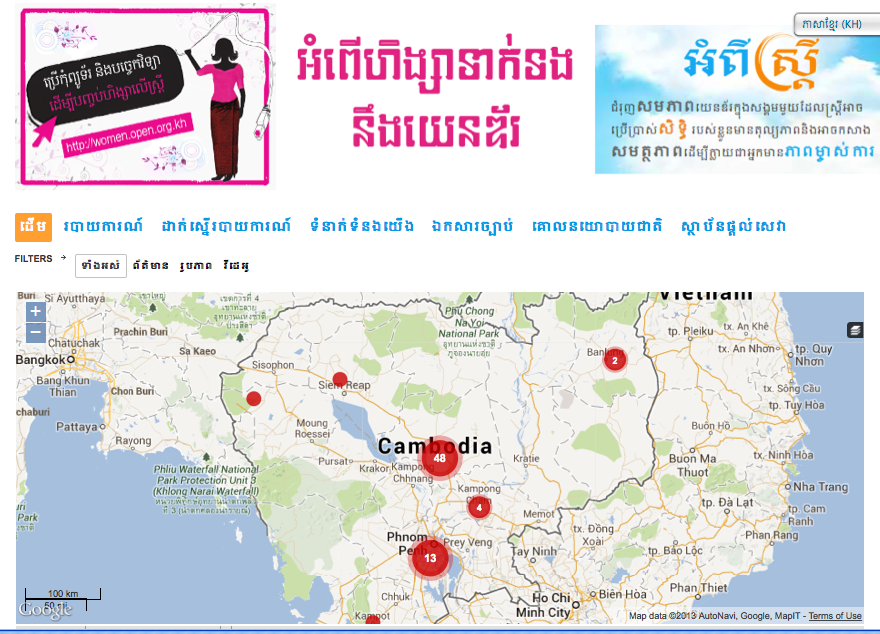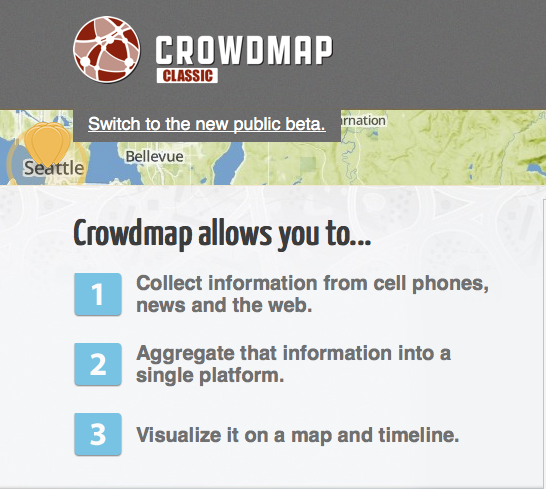(Guest post by Dirk Slater, cross-posted from Fabriders blog. )
Grateful thanks to Heather Leson (@HeatherLeson) and Maya Ganesh (@mayameme) from Tactical Tech for their valuable insights and input into this blog post.
I’m working with Eurasian Harm Reduction Network on a project addressing police violence against women who use drugs in Eastern Europe. The overall goal of this project is to empower an extremely marginalised community to take a stand for their rights. Also from a harm reduction perspective, it is far less likely that individuals seeking treatment from the state when they are also experiencing violence at the hands of it.
We are at the start of a campaign, which officially launches on March 8th, and will likely last three years in three phases. The first is “Breaking the Silence.” During which time we hope to engage local harm reduction groups in documenting the police violence that is happening in 16 cities. We will provide these groups with an online platform that will collect the data and display it on a map. Along with helping to develop the overall campaign strategy, I’ve been researching an online platform that would be capable of doing both the data collection and the mapping. In the age of Google maps and Ushahidi, I thought this would be relatively straightforward, but thought it wise to do some research and consult a few trusted colleagues. I’m certainly glad I did, because it wasn’t nearly as straightforward as I thought. Here’s some of the very good advice that I got:
Beware the ‘Dead Ushahidi’
Ushahidi is a platform that makes mapping out incidents and events very easy, as it allows input from a variety of sources, including the internet and mobiles. There’s been a bit of controversy about the number of Ushahidi deployments that have been set up and then abandoned. At face value, this can be thought of as a criticism of the Ushahidi platform, but if you dig deeper, what you find is that lots of folks have quickly jumped to deploy Ushahidi because: a) it’s gotten a lot of publicity and b) it’s easy to install and get going. But what a lot of folks haven’t thought through are questions about how mapping can support their own campaigns and missions. This is not a new phenomenon with technology and resource strapped advocacy groups. I don’t know how many times I’ve met with advocates who have said things to me like “we need a web site” or “we need a Facebook page” without actually having thought through what they would actually do with it.The smart thing that Ushahidi has done is develop Crowdmap, a browser based service that replicates the functionality of Ushahidi and gives individuals an opportunity to test drive putting data on a map. Heather Leson pointed out that groups should start asking themselves first, ‘why a map?’ and hopefully will instigates a conversation about how the map fits into the campaign. As an intermediary, our role is often not to advise on use of a technology, but rather if it’s integration into existing plans and strategies have been throught through. Heather was part of an effort to document a large Ushahidi deployment for the 2013 Kenyan elections called Uchaguzi. They set up a wiki, that anyone can reuse and remix, of the materials developed for the project here.
Take security very, VERY, seriously
Heather Leson was the first to point this out to me: anonymity is not an effective means of protecting identity, particularly if you are making information about location available. There are so many identifiers that are not connected to names. Repercussions for a victim to report an incident can have serious repercussions if an offending police officer recognises information in the report like locations and times.
This is not something to just think about once, but needs to become engrained into every step of project implementation. How can the details collected in each report put someone at risk?
Think through verification:
If you are collecting reports from a number of sources, think about a system for verification. This can be giving the reports you are gathering a good read to make sure they make sense. If your reports need to stand up to the scrutiny of international bodies or even courts of law, determine a system for verification that is both doable and will stand up to scrutiny. A good example of a verification process can be found here:https://wiki.ushahidi.com/display/WIKI/Uchaguzi+Verification+Team.
Consider the cultural relevance of maps
Does the community even use maps? How do they identify locations? Do they use addresses (‘123 Delancy Street’) or landmarks (‘straight past the market and then two streets to the left’). I was reminded of how this came up with a project on documenting violence against sex workers in Calcutta when we realised most people in the community never used maps. A good article about the difficulty of using gps and maps can be found here: http://www.theatlanticcities.com/technology/2013/03/why-its-nearly-impossible-make-gps-work-india/4934/
Consider how the map will be used
Bringing it back to strategy, think through who will use the map and how. If you are putting it in front of a community that doesn’t use maps, its not going to mean much – however, if you are using it with legislators and policy wonks, it should have impact.
Maya Ganesh for Tactical Tech has noted that maps are an easy way for organisations to look at data outside of a spreadsheet and start to get an understanding of how they want to use the data and for whom. It doesn’t necessarily need to start with strategy, having an opportunity to learn more about their data by looking at it via a map can be a great first step. Eventually you will need to connect it to an overall strategy and make sure you are on the right path.
Maya also points out that it is really critical to think through how your map will be used. Is it being used for accountability or to represent an issue? There’s really a big difference between the two, and any kind of visualisation is about putting the data to support your advocacy strategy. To get back to Heather’s earlier point, about ‘why a map?’ you may need to explore other ways to visualise data that will be more effective. If you don’t know how the map will have impact and want to explore, be deliberate in that intention, and build it into your plan/strategy.
Where from here?
Right now, we know the first phase is about getting the issue represented. After we have achieved this, and the campaign is able to start getting solutions addressed, there may be a role for it’s use in accountability.
We’ve decided to move forward by using Crowdmap Classic first (there’s a new version of crowdmap that has more bells and whistles, but it’s a bit more than we need and it’s still under development). We’re starting by getting two partners to use the crowdmap first and give us feedback. If it looks like mapping is the right platform, we will then do a full ushahidi deployment. I suspect that there might be other ways that we want to display the data.
I’ll be blogging about further developments as we go along.
Here’s some great resources that have helped me out so far:
- 10 Questions you should ask before deploying Ushahidi
- Data Cleaning Guidelines
- What the Red Dots are for
- The Verification Handbook
- Gender-Based Violence Mapping in Cambodia

